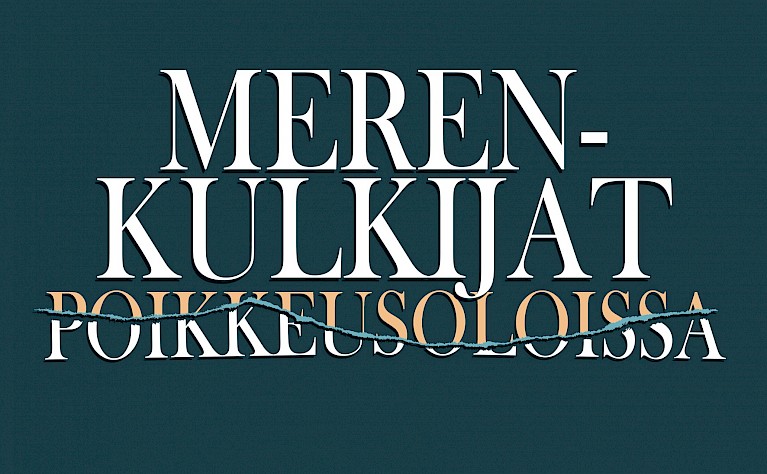
Why aren’t museum workers doing anything?
Seafarers in times of emergency
Preparing the exhibition “Seafarers in times of emergency”, we recognized several phenomena that were not covered by the collections of Rauma Maritime Museum, such as the covid-19 pandemic, migration, refugees and contemporary piracy. We realized that the material should be collected directly from seafarers.
Problems from pandemic
When the covid-19 pandemic set in, museums were active and documented the phenomenon, for instance by photographing and collecting related items, such as face masks and other protective device into their collections. We in Rauma Maritime Museum made an electronic questionnaire and distributed it to seafarers who could reply through such services as Finnish Seamen’s Service. Field work – shooting photos and interviewing on board ships – was not possible in terms of security. Many Finnish seafarers had to stay in various parts of the world because of awkward or lacking connections.
Documenting the present day, one must consider the data security and rights of use. With the electronic questionnaire, we were able to request the right to save the material in the museum collections.
Global problems cannot be passed
While it is the mission of Rauma Maritime Museum to record the work and everyday life of Finnish professional seafarers, several global problems and local restlessness affect the lives of Finnish seafarers as well. Refugees and emigrants are moving to Europe and around the continent, also by sea.
The news told us in early 2022 that a stow-away was revealed in the engine room of a cargo carrier bound for Rauma. The crew on the Federal Swift discovered the stow-away when they were sailing from Liverpool to Skagen in Denmark. The Border Guard and the Customs searched the ship thoroughly in the port of Rauma, and the stow-away was handed over to the police in Turku.
Finnish seafarers have encountered refugee boats trying to cross the Mediterranean, and they have used barbed wire to protect their vessels from pirates off the Somalian coast. Museum workers are not able to participate in such events; they need to collect the information in other ways. During the pandemic spring, we tried to collect data concerning other emergency times around the world – both recent and old events.
Lack of knowledge or will?
The electronic questionnaire concerning seafarers in times of emergency gained no great popularity. We only received four replies and two other contacts. We made an effort to make the questionnaire known through our own channels, with the help of Finnish Seamen’s Service, and through grape vine. We also tried to reach persons who had encountered exceptional circumstances, using our own channels and the social media.
In the end, our collections gained some highly interesting material that is now exhibited. The amount remained small, and in some cases, people were reluctant to submit their material to the museum. We can only guess why. When you are busy at work, you may not find the time to assist a museum. Submitted material always means that the museum needs to have the permission from the submitter; when it is not possible to discuss the matter face to face, the process may seem unreasonably complicated.
Recording the past as well as the present day is often a matter of chance. Museums have their plans and targets to increase their material, but they sometimes lack the opportunity. When we are unable to record a phenomenon ourselves, we rely on reaching individuals who are willing to submit a piece of their everyday life to those who study the present day and the future, and to our audiences.